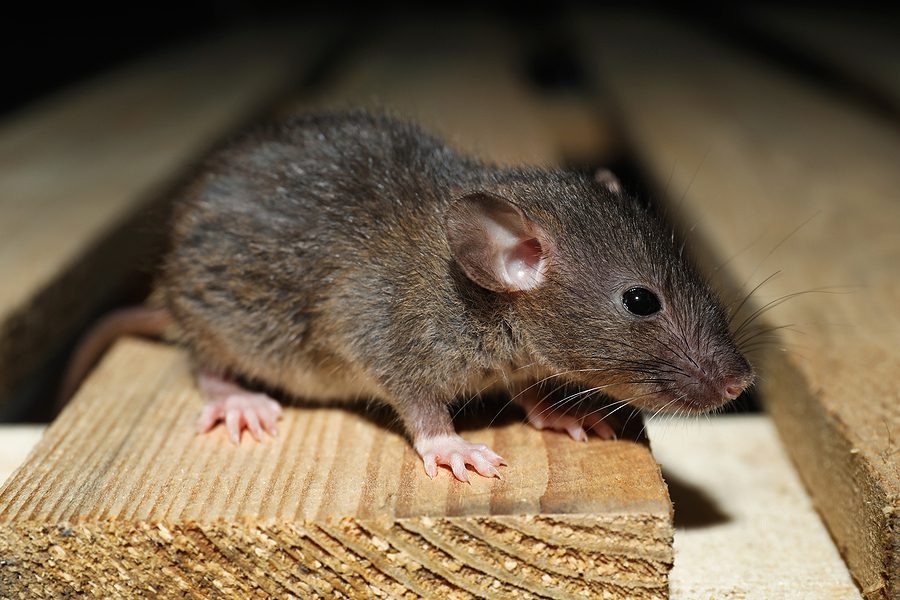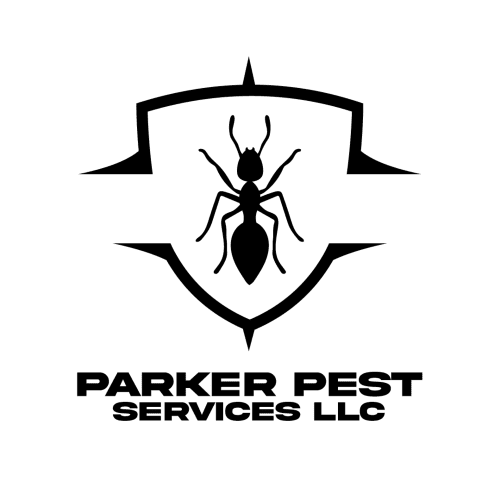What to do When a Mouse is in Your Santa Fe House

Oh no, is that a mouse in your house?
As much as we love cute pet mice, wild mice invading your home in Santa Fe are no laughing matter.
Once mice get settled into your home, they are incredibly difficult to evict. The best defense against mice is keeping them from sneaking their way in in the first place. No need for expensive exterminators or toxic chemicals!
This handy guide covers natural, humane techniques to deter mice from entering and making themselves at home using simple DIY methods.
How To Know If Mice Have Invaded Your Home
Mice are masters of staying out of sight, so you may be unaware they’ve taken up residence in your home for quite some time. Be on high alert for these common red flags that mice have moved in without your permission:
- Finding tiny black rice-sized poop along baseboards and in cabinets is a surefire sign of mice. Their small droppings are a dead giveaway of their presence!
- Chewed up holes in food packages, cardboard, or pet food bags point to mice gnawing entry points with their sharp teeth.
- Greasy rub marks along walls and baseboards from mice brushing up against the surfaces. They follow these edge paths to get around rooms undetected.
- Odd nests made from shredded scraps of paper, fabric, or insulation under appliances or tucked away in undisturbed drawers. Mice build these nests to sleep and breed in.
- A strong musky odor of urine lingering around the house. Mice scent mark their new territory.
- Scratching noises in walls and floors, especially active at night when mice come out to search for food.
- Pets staring intently at walls and acting riled up. Dogs and cats can detect the presence of mice even when you can’t.
If you notice any combo of these red flags, a mouse infestation is likely underway. Take prompt action to evict mice humanely while sealing up entry points to prevent future break-ins.
#1 Method: Seal Up All Possible Entry Points
Mice can squeeze through incredibly tiny gaps thanks to their flexible rib cages. Even a hole the size of a dime is big enough for a mouse to sneak inside. Sealing any breaches in your home’s exterior is key to keeping mice outside where they belong.
Inspect around windows, doors, the foundation, attic vents, and crawl spaces for cracks, gaps, loose siding, or other spots a mouse could potentially exploit to enter. Use steel wool, copper mesh, cement, hardware cloth, or metal kick plates to firmly plug these vulnerable holes. Avoid spray foam since mice easily gnaw through it.
Also trim back any bushes, vegetation, or tree branches directly touching exterior walls. Their branches can act as a mouse highway onto roofs and siding. Maintain at least 3 feet of space between landscaping and your home’s exterior walls.
Forgetting just one small gap in your home’s exterior can undo all other mouse deterrent efforts. Mice are stubbornly determined when it comes to sneaking inside. Be thorough in ensuring there are absolutely no openings for them to take advantage of.
#2 Method: Eliminate Any Outdoor Food Sources
Mice don’t just randomly select a home to infiltrate. They scout for easily available food sources nearby, then sneak indoors to get even closer access to the buffet. Deter mice by removing outdoor food sources surrounding your home:
- Position bird feeders at least 30 feet away from your home. The fallen seed acts as an open 24/7 snack bar for mice.
- Store pet food in airtight plastic or galvanized steel containers instead of paper bags. Mice easily chew through flimsy cardboard and plastic.
- Use secure lid locks and bungee cords to tightly seal garbage cans. Trash contains many tasty food scraps that appeal to mice.
- Place compost piles as far from your home’s exterior walls as possible. They are magnets for all kinds of pests.
- Quickly pick up fallen fruits or vegetables from trees/gardens near your foundation. Don’t offer any free snacks!
#3 Method: Keep Your Home Clutter-Free
Mice love hiding in dark, crowded spaces with lots of coverage. Reducing clutter removes the shelter they depend on when invading your home.
- Toss out unnecessary cardboard boxes, piles of newspapers or magazines, and unused furniture that provide hiding spots.
- Store essential boxes and paperwork up high on shelves instead of floor level.
- Make sure closets, basements, attics, and garages are clean and free of unnecessary items a mouse could nest in.
- Tightly seal any food like flour, oats, pasta, etc. in glass, metal, or rigid plastic containers that mice can’t chew through.
- Don’t let dishes with food residue or pet bowls sit out. Mice lick those clean!
Decluttering your home encourages mice to look for shelter elsewhere. An organized home is a pest-free home!
#4 Method: Tightly Close Garbage Bins
Garbage cans and bins are siren calls to mice, drawing them close to your home. Make sure outdoor garbage containers have secure, tight-fitting lids.
- Use bungee cords or bricks to firmly hold lids down so mice can’t knock them loose and climb in.
- Keep bins as far from your home’s exterior walls as possible, up on a raised platform if you can.
- Never let indoor garbage overflow. Take it out frequently to remove food smells mice zero in on.
Sealing trash containers shuts down an irresistible food source for opportunistic mice.
#5 Method: Strategically Landscape Gardens
Too much dense vegetation right against your home’s foundation provides the perfect hidden highway for mice to sneak inside. Carefully landscape problem areas:
- Keep all trees, shrubs, and plants at least 3 feet from touching exterior walls or siding.
- Prune back overgrown branches that contact the house. This removes their access.
- Maintain a gravel perimeter or short grass around the foundation. It leaves nowhere to hide.
Smart landscaping removes the natural pest pathways mice look for.
#6 Method: Seal Dry Foods in Airtight Containers
Pantry staples like flour, sugar, oats, pasta, etc. in flimsy packaging are easy targets for mice. Protect them by transferring to durable sealed containers:
- Use plastic bins or glass jars with tight lids mice can’t chew through.
- For added protection, keep containers in the fridge or freezer where mice won’t venture.
- Ensure human and pet dry foods are never left out overnight unsealed.
With their food sources secured away, mice must look elsewhere to dine.
#7 Method: Vacuum and Sweep Floors Frequently
Mice can survive on just a few tiny crumbs we wouldn’t notice. Don’t give them an easy meal:
- Quickly sweep up any pet food spills or fallen crumbs from meals.
- Don’t leave dirty dishes sitting out overnight.
- Vacuum under appliances and furniture to remove food debris mice might find.
- Always use sealed containers for pet foods, never sitting out in bowls.
Good cleaning habits remove the tempting food morsels mice depend on.
#8 Method: Close Doors and Check Seals
Open exterior doors and gaps under them allow mice easy, hidden entry into garages, patios, and basements.
- Make sure garage doors seal tightly along the ground when closed. Replace damaged weatherstripping.
- Close garage doors immediately after parking your vehicle, and keep interior access doors shut.
- Check patio door seals and install draft blockers under exterior doors.
Button up all possible outdoor access points to keep mice firmly outside where they belong.
#9 Method: Set Out Traps as Needed
For active mouse problems, traps are the fastest and most effective solution:
- Snap traps kill mice quickly. Use peanut butter or bacon as bait. Place along walls or under appliances.
- Live traps let you humanely catch and release mice far from home. Bait with seeds, nut butter, or pet food.
- Inspect traps daily and dispose of any caught mice so they can’t stink up your home.
Traps allow you to remove current mouse invaders without toxic chemicals. Monitor them closely for best results.
#10 Method: Use Natural Repellents
Mice dislike certain strong smells. Some natural options to repel them:
- Peppermint, eucalyptus, citronella, and cinnamon oils. Apply daily for best effects.
- Cayenne pepper, bleach, ammonia, mothballs, and dryer sheets. Use with caution indoors.
- Irish Spring soap bars may also deter mice, though not scientifically proven.
Use repellents preventatively to discourage mice from settling in. Reapply them frequently.
#11 Method: Adopt a Mouser Pet
Cats and dogs bred to hunt rodents can catch mice trying to move in:
- Young, energetic cats are great mousers before becoming less motivated adults.
- Terrier breeds have strong prey drives perfect for cornering mice.
- Make sure pets have access to rooms mice frequent so they can track them.
Pets provide natural pest control, but be sure to secure their food so mice aren’t attracted.
#12 Method: Eliminate Clutter
Mice seek out dark, enclosed spaces to build nests and hide. Minimize their options:
- Get rid of boxes, newspapers, magazines, etc. on floors they can hide under.
- Move storage boxes up high on shelves.
- Clean out cluttered basements, closets, sheds, garages, and yards.
Fewer cluttered areas discourage mice from settling in to breed.
When To Call In The Pros
For severe mouse infestations that overrun your home despite all your efforts, it may be wise to contact a professional pest control company. Exterminators have commercial-grade chemical poisons and traps not available to consumers to fully eradicate mice.
However, reach out to a company that uses IPM (Integrated Pest Management) principles and prioritizes natural, non-toxic methods first before resorting to poisons. Some signs it’s time to call the pros:
- You spot over 10-20 droppings per day, indicating a heavy mouse infestation.
- Traps and natural repellents alone aren’t resolving the issue after 2-3 weeks.
- You hear mice constantly in walls and floors, or you discover multiple large nesting areas.
- Mouse damage is excessive, like dozens of chewed holes in food boxes or furniture, putting your health at risk.
Act now before it’s too late!
